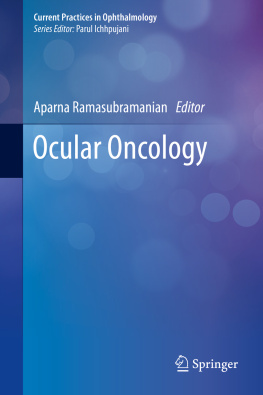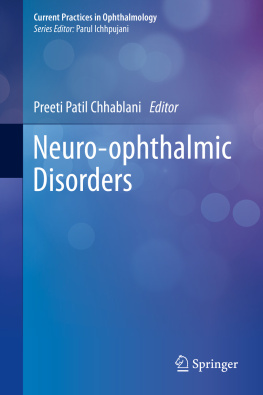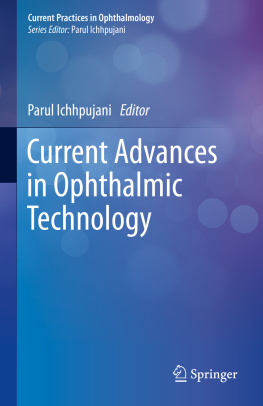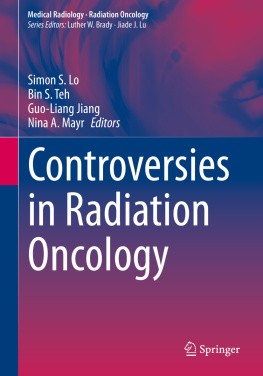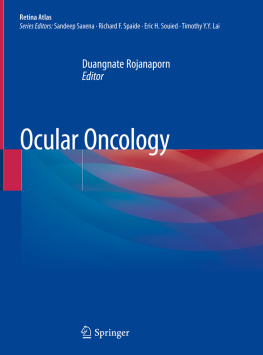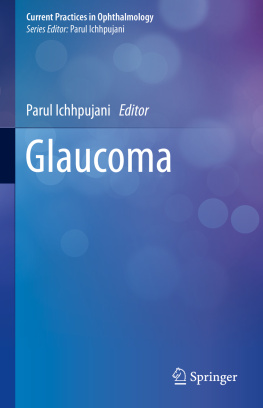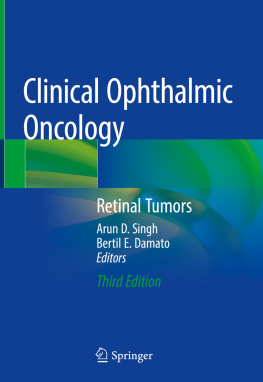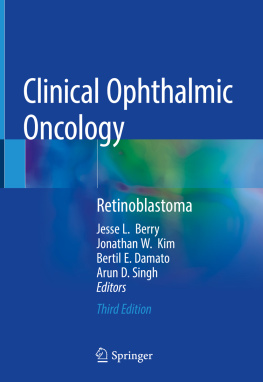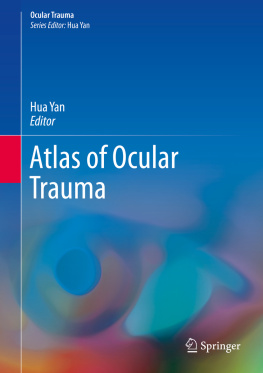Current Practices in Ophthalmology
Series Editor
Parul Ichhpujani
Department of Ophthalmology, Government Medical College and Hospital, Chandigarh, India
This series of highly organized and uniform handbooks aims to cover the latest clinically relevant developments in ophthalmology. In the wake of rapidly evolving innovations in the field of basic research, pharmacology, surgical techniques and imaging devices for the management of ophthalmic disorders, it is extremely important to invest in books that help you stay updated. These handbooks are designed to bridge the gap between journals and standard texts providing reviews on advances that are now part of mainstream clinical practice. Meant for residents, fellows-in-training, generalist ophthalmologists and specialists alike, each volume under this series covers current perspectives on relevant topics and meets the CME requirements as a go-to reference guide. Supervised and reviewed by a subject expert, chapters in each volume provide leading-edge information most relevant and useful for clinical ophthalmologists. This series is also useful for residents and fellows training in various subspecialties of ophthalmology, who can read these books while at work or during emergency duties. Additionally, these handbooks can aid in preparing for clinical case discussions at various forums and examinations.
More information about this series at http://www.springer.com/series/15743
Editor
Aparna Ramasubramanian
Ocular Oncology
Editor
Aparna Ramasubramanian
University of Louisville, Louisville, KY, USA
ISSN 2523-3807 e-ISSN 2523-3815
Current Practices in Ophthalmology
ISBN 978-981-13-7537-8 e-ISBN 978-981-13-7538-5
https://doi.org/10.1007/978-981-13-7538-5
Springer Nature Singapore Pte Ltd. 2019
This work is subject to copyright. All rights are reserved by the Publisher, whether the whole or part of the material is concerned, specifically the rights of translation, reprinting, reuse of illustrations, recitation, broadcasting, reproduction on microfilms or in any other physical way, and transmission or information storage and retrieval, electronic adaptation, computer software, or by similar or dissimilar methodology now known or hereafter developed.
The use of general descriptive names, registered names, trademarks, service marks, etc. in this publication does not imply, even in the absence of a specific statement, that such names are exempt from the relevant protective laws and regulations and therefore free for general use.
The publisher, the authors, and the editors are safe to assume that the advice and information in this book are believed to be true and accurate at the date of publication. Neither the publisher nor the authors or the editors give a warranty, expressed or implied, with respect to the material contained herein or for any errors or omissions that may have been made. The publisher remains neutral with regard to jurisdictional claims in published maps and institutional affiliations.
This Springer imprint is published by the registered company Springer Nature Singapore Pte Ltd.
The registered company address is: 152 Beach Road, #21-01/04 Gateway East, Singapore 189721, Singapore
Contents
Shweta Gupta and Swathi Kaliki
Amy C. Schefler and Ryan Sangwoo Kim
Mona Mohammad and Mandeep S. Sagoo
Sahas Narain , Ashwini Kini and Aparna Ramasubramanian
S. Madison Duff , Niloofar Piri and Hossein Asghari
George N. Magrath and Emil Anthony T. Say
Janelle Fassbender Adeniran , Oluwasayo Akinyosoye and Aparna Ramasubramanian
Brent E. Aebi and Denis Jusufbegovic
About the Editor
Aparna Ramasubramanian
is an assistant professor of pediatric ophthalmology and oncology at the University of Louisville. She did her medical school at the University of Kerala, India, followed by ophthalmology residency in Indiana University. She received fellowship training in ocular oncology at Wills Eye Institute and in pediatric ophthalmology at Childrens Hospital, Boston. Her primary research and clinical interest is retinoblastoma, and she is the author of the leading textbook on Retinoblastoma . She has published extensively in peer-reviewed journals and is a reviewer for all leading ophthalmology journals. Besides retinoblastoma, she also treats the whole range of pediatric and adult eye tumors and keeps a keen interest in secondary eye manifestations of cancer.
Introduction
Management of retinoblastoma is complex as well as highly customized for every single child. The choice of treatment depends on many factors including age of the patient at presentation, tumor laterality, tumor size and location, macular involvement, vitreous and/or subretinal seeding, tumor relationship to surrounding tissues (optic disc, choroid, iris, sclera, and orbit), tumor staging, risk for metastasis, and visual potential []. It involves certain considerations such as systemic status, overall prognosis as well as family desires, social perception, and cost-effectiveness of treatment in a particular financial setting.
The principal objective of retinoblastoma treatment is child survival, followed by globe salvage and preservation of vision. It is a challenge to cure the disease and preserve the globe while maximizing visual potential and minimizing toxicity. A multidisciplinary approach at a tertiary care center is fundamental in the treatment of retinoblastoma with an organized team comprising ocular oncologist, pediatric oncologist, ocular pathologist, pediatrician, interventional radiologist, radiotherapist, and genetic counselor [].
Various modalities in the treatment of retinoblastoma can be classified into focal therapy (transpupillary thermotherapy, laser photocoagulation, cryotherapy, plaque brachytherapy), local therapy (intra-arterial chemotherapy, enucleation, external beam radiotherapy/EBRT), and systemic therapy (intravenous chemotherapy). Small tumors are primarily treated with focal therapy, while local and systemic modalities are used in the treatment of advanced retinoblastoma [].
There has been remarkable advancement in the conservative treatment of intraocular as well as orbital retinoblastoma over the last decade, using different routes of drug delivery, new chemotherapeutic agents, and novel radiation treatment modalities in order to improve success rates and minimize the adverse effects of conventional treatment.
Conservative treatment modalities which salvage the globe as well as preserve functional vision are increasingly being used for less advanced disease (groups AD ICIOR) []. These include systemic chemotherapy, intra-arterial chemotherapy, focal consolidation, radiation treatment with plaque brachytherapy, and local injections of chemotherapeutic agents through the intravitreal/subtenons route in addition to systemic chemotherapy.

